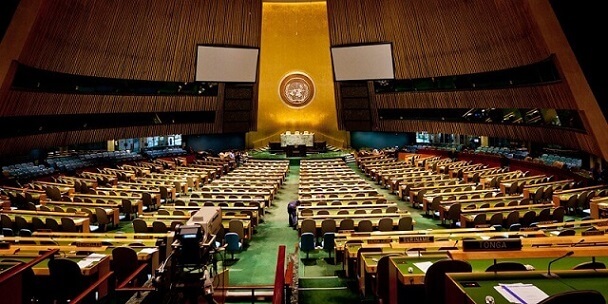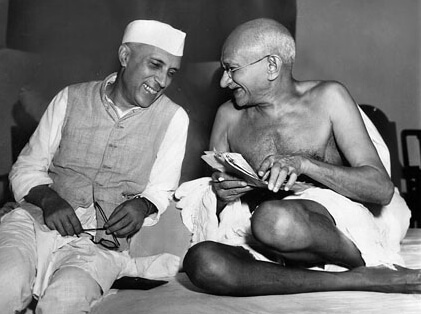On the thirtieth anniversary of Tiananmen Square protests, let us see the fundamental shift that is happening in the world by the rise of China. Many scholars including Former U.S. Secretary of State Henry Kissinger point to the Peace of Westphalia in 1648 as the beginning of the idea of the nation-state. After the Thirty Years’ War in Europe, these treaties that were hammered in the mid-seventeenth century pronounced the concept of state sovereignty. It defined that sovereignty of a state shall be exclusive over its territory irrespective of its power or size. This fundamental concept of state sovereignty has never been challenged since. But, the other legacy that these treaties bequeathed was that of a world order centered around the European nations.
From 1648 to the start of the American Revolution in 1776, there were many small-scale wars in Europe but these did not fundamentally change the equilibrium of power between the European nation-states. Though France and Britain went to war with each other during the American Revolution and before that during the French and Indian War, at home, things were kept below the melting point by these two powers. This equilibrium of power faced its first serious challenge in the form of Napoleon Bonaparte. With France conquering large parts of Europe, it looked probable that Europe may become unipolar instead of bi- or multi-polar that it had been for more than a century (depending on how you evaluate the relative power of other European nation-states).
With Napoleon’s defeat at Waterloo in 1815 and the Treaty of Paris that followed, Europe again attained equilibrium. This was maintained for a whole century until the First World War. During this century, a new world power, the United States of America, had risen. Because of its fraternal ties with Europe and the factor of geographical isolation, America was comfortably absorbed in the European world order (creating so to say a Euro-American dominance). Germany tried twice (World War I and II) to destabilize this multipolar world order but was defeated both times and ultimately dissected. Then, arose the Soviet Union. This was the first time since the heyday of British and French empires that the world again became bipolar (U.S. and Soviet Union being the two poles). The cold war between these two was in many ways similar to what had been between Britain and French (of course, the difference being the potential to wipe out most of humanity by the use of weapons that were now no more a mere fascination of the vilest human minds). In the nineteenth century, America had utilized the cold war between Britain and France by being mostly neutral and enjoying prosperity. The same pattern was repeated by many so-called “third world” nations in the second half of the twentieth century by utilizing the cold war to focus on their domestic agendas (most notably by India).
With the dissolution of the Soviet Union, the world became unipolar for the first time in its history. The collapse of the Soviet Union was so swift, unexpected, and complete that it struck the world with surprise and unsettled the foreign policy of most nations. Germany was united once more but was in no shape to again become the heart of European power. Thus, America, the sole world power, became capable of pushing its agendas without much dissension from other nations but also without a clear and concise long-term view of foreign policy. This unipolar world unleashed the raw forces of globalization as had never happened before and almost all nations around the world prospered. This world order of unipolarity came crashing down with the stock markets during the 2008 financial crisis. America, still the most dominant power in the world now needed the support of other nations to come out of the crisis.
In 2008, China’s GDP was about a third that of America’s GDP. Since the end of the Second World War, Americans had put their faith in increasing the size of world pie. There was the view that as the size of the pie will increase, America’s dominance will get diminished but it will still be the most prosperous nation (i.e. the one with the largest piece of the pie) in a stable world. This model worked well for Americans as well as its allies during the cold war. Hence, Barack Obama continued to pursue this policy by not taking any steps that would hamper China’s growth. Under Bush and Obama, America did reach out to India and other Asian nations but with the view of containing China in the future and not with the aim of hampering China’s present growth. It looked to be a good strategy at the time since China was nowhere near America in any index of prosperity and it had shown itself to be quite calm—focusing only on domestic prosperity and the perpetuation of the authoritarian regime—from the time of Deng Xiaoping. In the past few years, all this has fundamentally changed. China’s GDP is now not only two-thirds of America’s GDP but it is comfortably greater than the combined GDP of its three closest competitors (Japan, Germany, and India). China remains not only authoritative but its authoritarianism has further increased under Xi Jinping. It is also showing itself to be much more aggressive and vocal. The Belt and Road Initiative and flexing of muscles in Southeast Asia and the Indian Ocean reveal that China is not shying away from appearing more assertive—an outcome of its economic strength. It was one thing for America to not be wary of China a decade ago, it’s another thing now when the geopolitical balance has totally changed.
Engagement with China in the hope that it will become less authoritative has not only been disappointing but has proven to be the textbook example of failure. China is a riddle wrapped in a mystery inside an enigma (to quote Churchill’s lines about the Soviet Union which has striking parallels since we know so little about what happens inside the Chinese regime) which is attempting to attain what it considers to be its rightful place—the middle kingdom; the central power of the world. The incumbent American administration’s attitude towards China has been confounding. This is not because of the Administration’s policy of tariffs, restricting access to technology, trade war, etc. but because of a lack of continuity. At a time when American allies in Southeast Asia need reassurance, they have been repeatedly asked to look after themselves—thus diminishing America’s credibility. China is increasingly equating itself with America in the size of its delegations in events around the world as well as by presenting itself as an alternative to spearhead the campaign against climate change after the American withdrawal from the Paris Climate Agreement. Will the world accept the leadership by an authoritarian regime with no faith in human rights (examples: Tibet, Xinjiang, etc.)?
I say that the world order is fundamentally changing because if China will continue to rise at a fast enough pace compared to the U.S., the world shall again become bipolar. But, this will be the first time since the Peace of Westphalia that one pole will be fixed in Asia. In this context, a much-debated question has been: Can America and China avoid the Thucydides Trap? Hopefully, that situation will not arise since America, due to its democratic form of governance and its foreign policy’s reliability in the past, America remains much more acceptable across the world than authoritarian China. Furthermore, America still leads the way by far in terms of innovation, the stability of financial institutions, the number of allies, and all three fronts of modern warfare—naval, cyber, and space.
For that other multiethnic, multilingual, and democratic nation aspiring to become a world power, India, a further rise of China in its neighborhood will restrict its ability to maneuver unless India starts to grow at a tangibly faster rate and consolidate its power over a sustained amount of time. India has to be extra cautious since, on the one hand, any implicit understanding between America and China in the future about defining their own areas of influence will be detrimental to India’s rise while on the other hand, India cannot align itself with American foreign policy because of the unpredictability of the same. To maneuver in these stormy waters, India will need to use all the four Kautilyan tools from its history: Sama (conciliation or alliances), Dama (gifts or compensation), Danda (usage of logic or trickery), Bheda (force or armaments). As an African proverb goes, one should speak softly and carry a big stick. Expanding the size of India’s foreign service personnel which is currently even less than that of Singapore will surely help.

 Nehru, the Opposition, and the One Sheep
Nehru, the Opposition, and the One Sheep